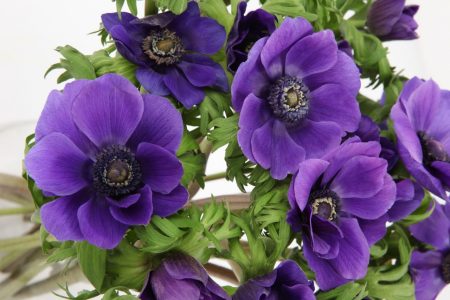 You should not be afraid of “difficulties” in matters of caring for anemones, theoretical awareness and some practical skills, as well as the advice of experienced gardeners, that’s all you need to succeed in this matter. And the most beautiful, tender and touching flowers for a summer residence Anemones for planting and care in the open ground (photo attached) respond with gratitude, and bloom profusely and for a long time, look great in bouquets when cut and in the photo. Their selection is simply huge, simple and terry, similar to daisies and poppies, as well as dahlias, with a variety of colors, all in all, there are 150 species of anemone.
You should not be afraid of “difficulties” in matters of caring for anemones, theoretical awareness and some practical skills, as well as the advice of experienced gardeners, that’s all you need to succeed in this matter. And the most beautiful, tender and touching flowers for a summer residence Anemones for planting and care in the open ground (photo attached) respond with gratitude, and bloom profusely and for a long time, look great in bouquets when cut and in the photo. Their selection is simply huge, simple and terry, similar to daisies and poppies, as well as dahlias, with a variety of colors, all in all, there are 150 species of anemone.
General brief information on favorable conditions for anemones.
For all types of anemones, which are divided into four groups:
- crowned;
- forest;
- Japanese
- tender
The following general care requirements are characteristic.
Shine
Anemones do not like direct sunlight, but at the same time they need sufficient lighting, therefore, before choosing the place of planting of this perennial plant, it is necessary to think about fulfilling this condition. It is believed that the anemone feels great in partial shade, but, however, one should also be careful here, many people consider partial light to appear in the afternoon, as well as other interpretations. Anemone, on the other hand, needs light all day, but in an absent-minded form, for example, it can be planted under large, sprawling tree branches.
Recommended:Planting and caring for a peony tree in the open ground.
The soil
The soil for the anemone (planting and care in the open ground is very important) should also be prepared initially, so that later, after planting in ordinary soil, you will not be disappointed. Simple soil preparation requirements:
- loose structure;
The soil is not only loosened, but also enriched with nutrients to increase fertility, for which a mixture of sand, chernozem and peat is used.
- correct acidity;
Acidified soil can also cause poor flowering and the small number of anemone shoots, so planting should be done in properly prepared open ground, and regular care should be provided. In order not to puzzle over the reasons for this behavior of the plant, it is better to immediately add wood ash to the top layer of the soil before planting, mixing it with the ground. Another option for changing the acidity of the soil can be the introduction of dolomite flour, which can be purchased at a fertilizer store.
Recommended:Perennial flowers for a summer residence.
High permeability
The moisture of the anemone, of course, is very fond of, but does not tolerate waterlogging, and especially stagnation of water. In order to avoid failures in the future, when you are already in the mood for lush flowering, and it will be absent, it is better to immediately eliminate this possible reason for the "inadequate" behavior of the plant.
To increase the water permeability of the soil, as well as its better air exchange, which is very important for the root system, it is necessary to provide a reliable drainage system during planting. Drainage is prepared very simply, so do not neglect such a simple, but extremely important agricultural technique. Small stones or broken brick, pieces of expanded clay, are poured into the pit for planting, then there is a layer of sand, and only then a fertile layer is prepared, prepared as described above.
Landing anemones
Reproduction and planting of this plant can be done in two ways:
- seed;
Breeding anemones (planting and care in the open ground with the photo we provided) with seeds is a rather risky task, from the first try it may not be possible to achieve the desired results, however, this is not a reason to refuse this method of propagation of this perennial herb, just do everything the rules should be followed with particular care, not neglecting the apparent "little things."
If the seeds are planted in the spring, then it is necessary to carry out their stratification, aging at low temperatures, when sowing "in the winter", ie in late autumn, the need for such an agricultural industry disappears.
According to experts, the best time to land anemones in open ground seeds, is spring, while plant care is also facilitated, the photo shows how the flowers give thanks for taking care of them, striking their beauty. During seed propagation, the anemone must be properly prepared for the soil, it should be loose, but slightly compacted on top so that the seeds do not fall into the soil.
Fall asleep, distributed over the area, the seeds should be a shallow layer of light, loose, prepared soil so that delicate thin shoots can easily break through it, after about a month of planting.
- vegetative;
With a more reliable and widespread method of planting, which is the vegetative method, there are two, division of rhizomes and tuberous reproduction. The presence of these two methods of breeding this plant is based on the division of all types of anemone into two groups, rhizome and tuberous.
In the rhizome method, the rhizome is carefully divided, and it should be carefully monitored so that on both parts of the divided rhizome there are several buds, from which the updated crown will grow.
With tuber planting, they should be pre-soaked in water at room temperature until the volume of tubers increases. When tuber planting, a sufficient depth of the pit is observed, which reaches 7 cm, followed by pouring a layer of mulch, which consists of last year's leaves, twigs, straw.
Recommended:Flowers for summer cottages blooming all summer.
After landing care
The fact is that if you have completed all the measures described in this material to ensure normal and desirable conditions for anemones (planting and care in the open ground according to the photo and tips) without problems, then subsequent care for it is minimized to a minimum . Mainly:
- timely watering, soil moisture control;
- the introduction of complex fertilizers once during flowering, and optional, it all depends on the fertility of the soil;
- mulching, is a mandatory agricultural industry for the care of anemones, it is necessary to ensure that the mulch layer corresponds to 5 cm;
For wintering, the plant is covered with a large layer of mulch, reaching a height of 15 cm, if the plant is tuberous, they are dug up, dried and cleaned in a dry, cold place.

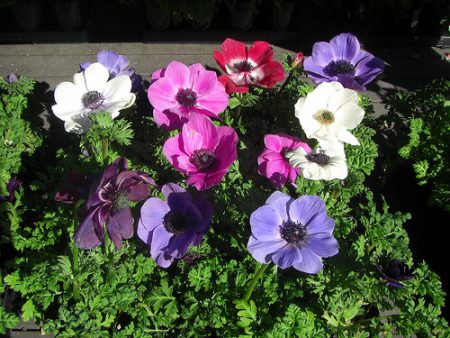
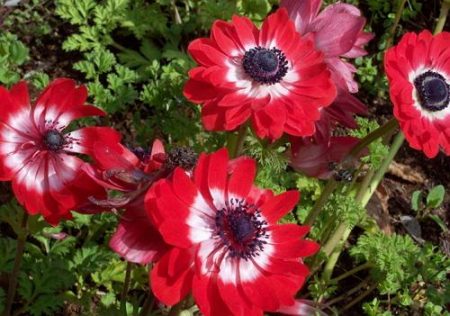
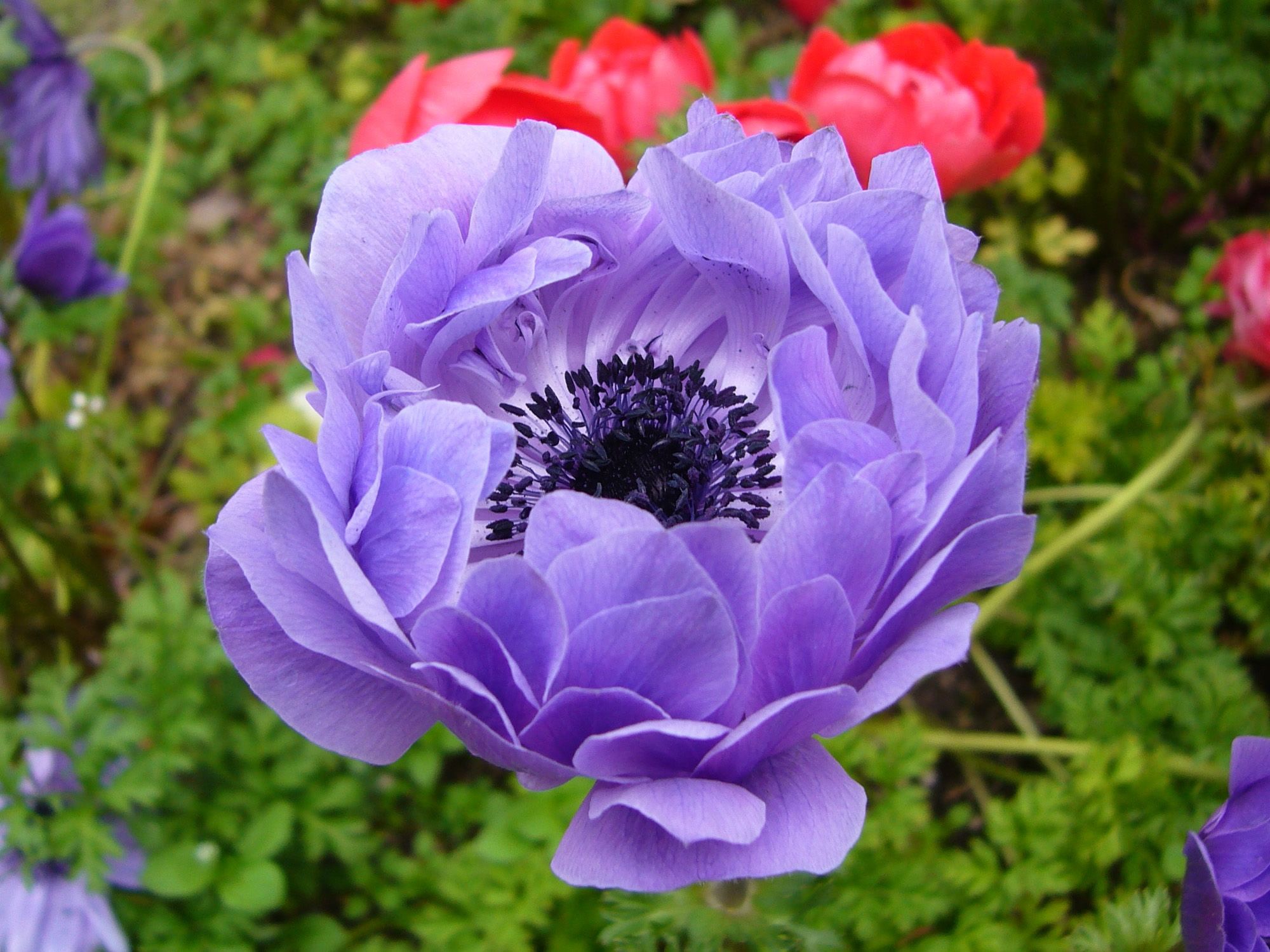
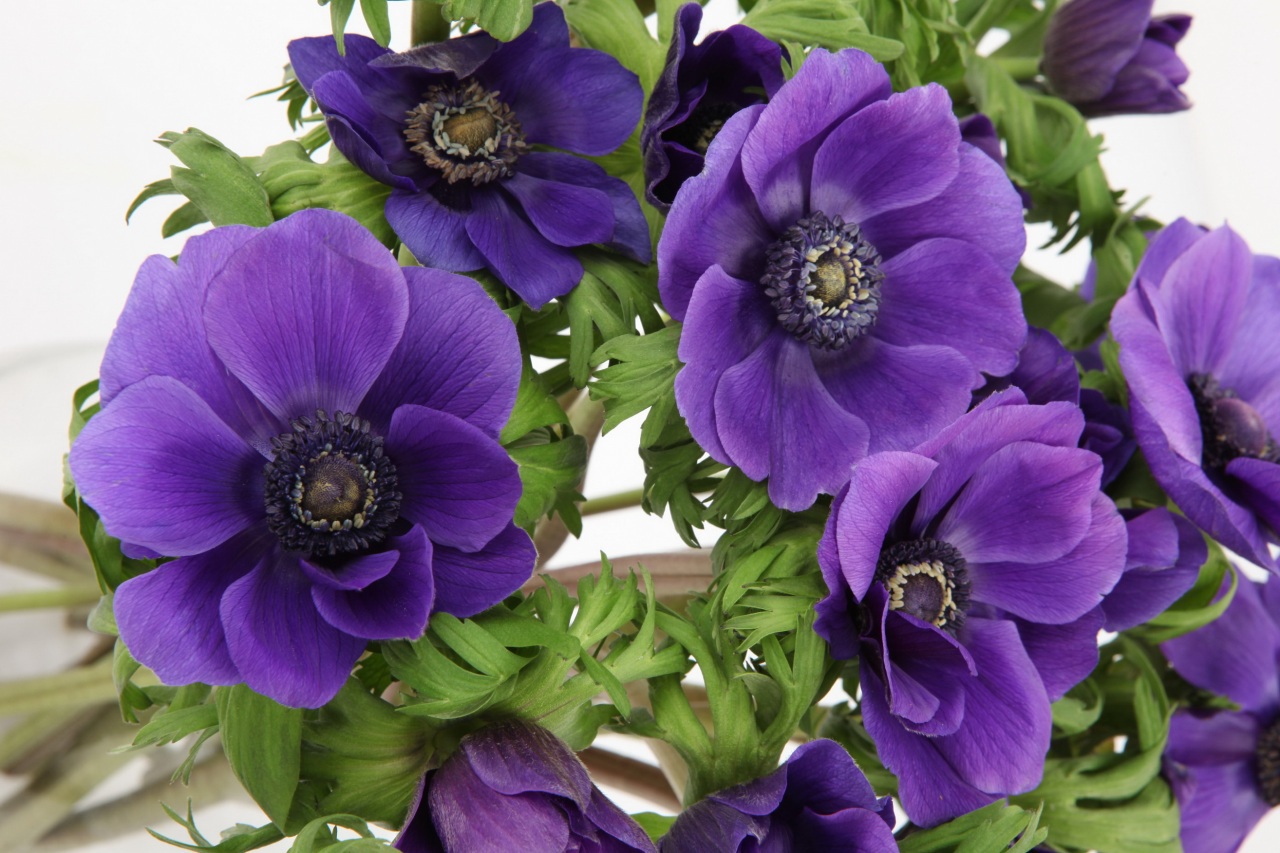
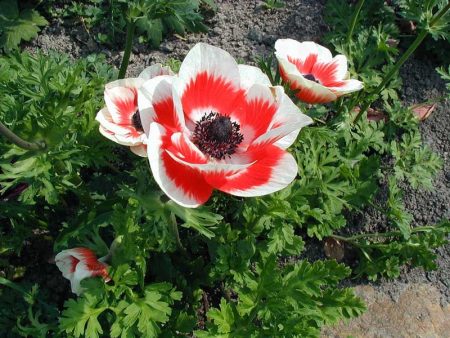
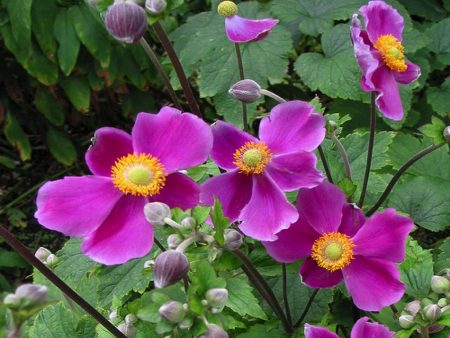
svetlana
planted anemone tubers at the beginning of September in the ground, hoping that it will rise and bloom in spring. Now it’s the beginning of October and I have all seven tubers sprouted and sprouted. Now I worry that frost will hit and the young plants will die. So when did you need to plant the tubers in the ground?
Alice
I bought a box of geolia Blue Collection - a “ready-made flowerbed” - with anemone tubers and bulbs of hyacinths, muscari and iris - made in the Netherlands. All bulbs are of excellent quality. On the box there is an instruction with a detailed description of each plant and everything is written - including anemones! - plant in the ground in November-December! I planted bulbs of tulips and hyacinths in November last year - everything sprouted and blossomed perfectly. But at the expense of anemone, I was surprised. But I will try, as it is written on the box.
Gennady
I ask you to issue a mailing list of materials. Gennady
Gennady
Tomathouse.com thank you for the newsletter. For me, this is a question of my longevity. Gennady
Gennady
I ask you to subscribe. Gennady